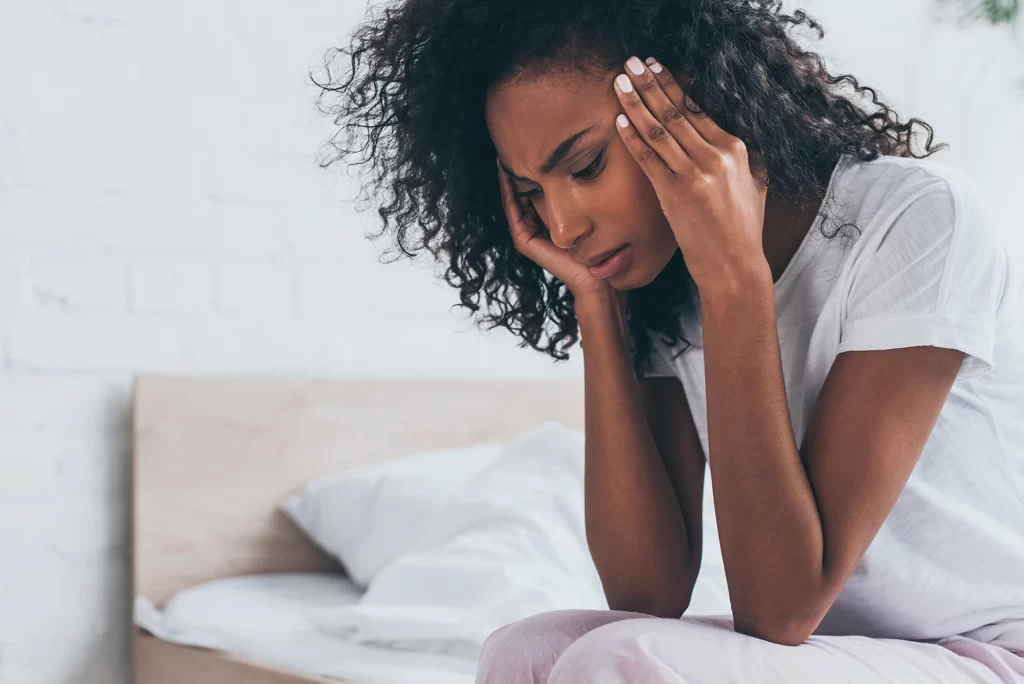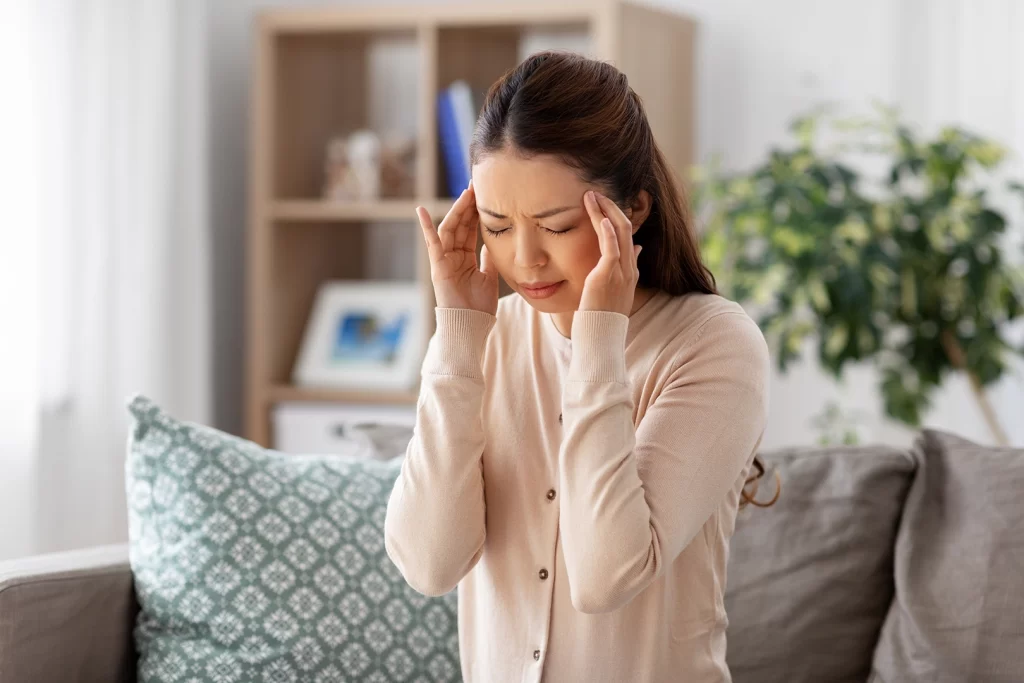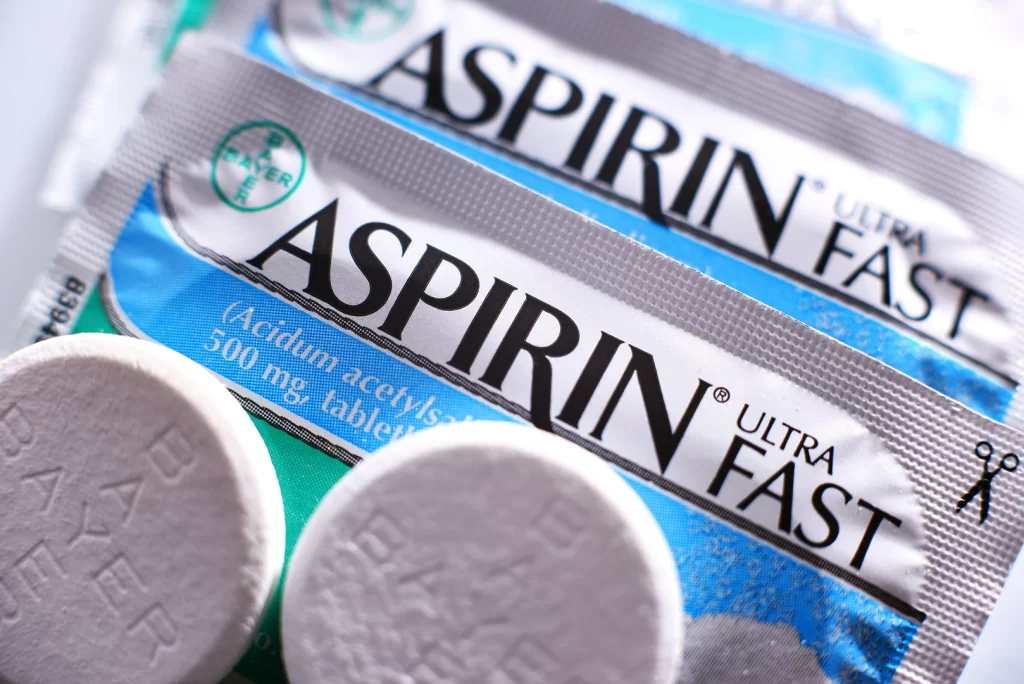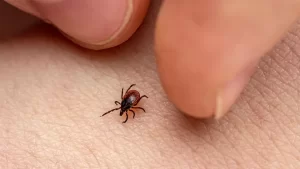Dean had been struggling with migraines for years. They were an unwelcome weekly visitor that he dreaded every time he sensed the prodrome symptoms — the dull ache, the visual changes, a weird gastric feeling, etc.
When the pain, which was usually inevitable, arrived, it was excruciating, and it seemed like nothing could relieve it. In fact, he would need to isolate himself in a dark quiet room, in a fetal position, motionless, as any light or sound would exacerbate the pain.
He would also have concurrent nausea, and often some vomiting. In totality, it was affecting every phase of his life, from work to social activities, and even his relationships with his loved ones.

Dean had seen countless doctors and tried every medication imaginable, but nothing seemed to help. The migraines were still a constant presence in his life, and he was beginning to lose hope. He started to feel like he would be stuck with this condition forever, and that it would continue to control his life.
One day, Dean decided to take matters into his own hands. He adopted a healthy lifestyle that involved a plant-centered diet, stress management techniques, better sleep hygiene, and regular exercise. At first, it was difficult to make these changes, but he was determined to find relief from his migraines. This was a desperate attempt, but he had no choice.
Slowly but surely, Dean began to notice a difference. The migraines were becoming less frequent and less severe. He was able to focus better at the hospital, and he was even able to enjoy social activities without fear of a migraine attack.
After a few months of sticking to his healthy lifestyle, Dean realized something incredible – the migraines had completely disappeared. He couldn’t believe it. He had lived with this condition for so long that he had accepted it as a part of his life, but now it was gone.

Dean knew that his experience was just an anecdote, and that headaches are complex and often involve multiple variables. However, he also knew that his healthy lifestyle changes had made a significant difference in his life.
He wanted to share his story in the hopes that it would inspire others who are struggling with migraines or other chronic headaches to explore lifestyle change as an adjunct treatment, often in addition to the pharmaceutical treatments, which have now proven to be very effective in managing many of these headaches.

The epidemiology of headaches
Headaches are one of the most common reasons why people seek medical attention.
They can occur in any age group and gender, with some types more common in women and others — like cluster headaches — significantly more frequent in men. The WHO classifies headaches into three categories:
Primary Headaches: these are the most common types of headaches, accounting for 90% of all headaches. The main primary headache types are tension-type headaches, migraines, and cluster headaches.
Secondary Headaches: these are caused by an underlying condition or disease, such as a sinus infection, head injury, or brain tumor.
Cranial Neuralgias, Facial Pain, and Other Headaches: these types of headaches are less common and can be caused by inflammation or damage to the nerves in the head and neck.

What are the different types of headaches?
Let’s take a closer look at the three primary headache types:
Tension-Type Headaches: these are the most common type of headache, and are usually characterized by mild to moderate pain that feels like a tight band around the head. Tension headaches can be triggered by stress, anxiety, or muscle tension.
Migraines: these are a severe form of headache that can cause intense pain, nausea, vomiting, and sensitivity to light and sound. They are usually preceded by visual disturbances, such as flashing lights or zigzag lines. Migraines are often triggered by environmental factors such as stress, certain foods, hormonal changes, or changes in sleep patterns.
Cluster Headaches: these are a rare type of headache that typically occur in cyclical patterns or clusters. They are characterized by severe pain on one side of the head, often around the eye or temple. Cluster headaches can be triggered by alcohol, tobacco, or certain medications.
How are headaches treated?
Treatment for headaches will depend on the type and severity of the headache. Over-the-counter pain relievers such as acetaminophen, ibuprofen, and aspirin are often effective for mild to moderate headaches. For more severe headaches, prescription medication may be necessary.
Migraines are typically treated with triptans, a class of drugs that work by constricting blood vessels and reducing inflammation in the brain. Triptans come in various forms such as pills, nasal sprays, injections and work best when taken at the onset of a migraine. Ergotamines, another class of drugs, can also be effective in treating migraines and are sometimes used when triptans are not effective.
For tension headaches, nonsteroidal anti-inflammatory drugs (NSAIDs) such as aspirin, ibuprofen, or naproxen can help.
Cluster headaches are treated with various types of medications, including triptans, calcium channel blockers, and steroids. Oxygen therapy may also be effective for treating cluster headaches.

Preventative medications and lifestyle factors for headaches
In some cases, preventive medications may be necessary to reduce the frequency and severity of headaches. These medications are taken daily, even when the person is not experiencing a headache, and are typically prescribed for people with chronic or severe headaches several times per week.
Preventive medications for migraines include beta-blockers, calcium channel blockers, and anticonvulsants such as topiramate and valproic acid. Cluster headaches can be treated with calcium channel blockers and corticosteroids.
In addition to medication, several lifestyle interventions can be effective in managing headaches. Here are some of the most common interventions:
Diet: certain foods and beverages can trigger headaches in some people, such as alcohol, caffeine, chocolate, and aged cheese. Keeping a food diary can help identify trigger foods and allow them to be avoided.
Exercise: regular exercise can help reduce stress, improve sleep, and increase endorphins, which are the body’s natural painkillers. Low-impact exercises such as walking, yoga, and swimming can be effective in reducing headaches.
Stress Management: stress is a common trigger for headaches, so finding ways to manage stress can be helpful. Meditation, deep breathing, and other relaxation techniques can help reduce stress and decrease the likelihood of a headache.

Sleep: getting adequate sleep is essential in preventing headaches. Establishing a consistent sleep routine and avoiding caffeine and alcohol before bed can help improve sleep quality and reduce the likelihood of a headache.
Physical Therapy: this can be helpful in managing headaches caused by muscle tension or injuries. A physical therapist can teach exercises and stretches that can relieve muscle tension and prevent future headaches.
Acupuncture: this traditional Chinese therapy involves inserting needles into specific points on the body. It is believed to help balance the body’s energy and can be effective in reducing the frequency and intensity of headaches.

Conclusion
Chronic headaches can be a challenging condition to manage, but with the right treatment and lifestyle interventions, it is possible to reduce their frequency and intensity.
Dean found relief from his headaches through diet and exercise, illustrates the power of lifestyle interventions in managing headaches for some, but it should always be under the supervision of a neurologist often along with other treatments.
Treatment for headaches includes medication along with lifestyle interventions such as diet, exercise, stress management, sleep, physical therapy, acupuncture, along with botox. By working with a healthcare provider and implementing a more holistic plan, it is possible to manage headaches effectively and improve quality of life.
Sources
- Rizzoli, P., & Mullally, W. J. (2018). Headache. American family physician, 98(10), Online.
- Tietjen, G. E., & Peterlin, B. L. (2011). Childhood Abuse and Migraine: Epidemiology, Sex Differences, and Potential Mechanisms. Headache: The Journal of Head and Face Pain, 51(7), 869-879.
- Lipton, R. B., & Bigal, M. E. (2005). Migraine: Epidemiology, Impact, and Risk Factors for Progression. Headache: The Journal of Head and Face Pain, 45(s1), S3-S13.
- American Migraine Foundation. (2021). Headache Hygiene: Lifestyle Management of Migraine. Retrieved from https://americanmigrainefoundation.org/resource-library/headache-hygiene-lifestyle-management-of-migraine/
- Varkey, E., Cider, A., Carlsson, J., & Linde, M. (2011). Exercise as migraine prophylaxis: a randomized study using relaxation and topiramate as controls. Cephalalgia, 31(8), 1428-1438.
- Chen, Y. H., Kang, J. H., & Lin, H. C. (2014). Patients with migraine are at increased risk for developing chronic kidney disease: a population-based cohort study
- Zhou, Y., Boudreau, D. M., & Freedman, T. G. (2021). Adherence, switch rates, and discontinuation rates of medications for migraine prophylaxis: a systematic literature review. Headache: The Journal of Head and Face Pain, 61(5), 666-682.
- Coeytaux, R. R., Kaufman, J. S., Kaptchuk, T. J., Chen, W., Miller, W. C., Callahan, L. F., & Mann, J. D. (2005). A randomized, controlled trial of acupuncture for chronic daily headache. Headache: The Journal of Head and Face Pain, 45(3), 1113-1123.
- MacGregor, E. A. (2017). Migraine headache: diagnosis and management. British Journal of Hospital Medicine, 78(8), 428-432.



